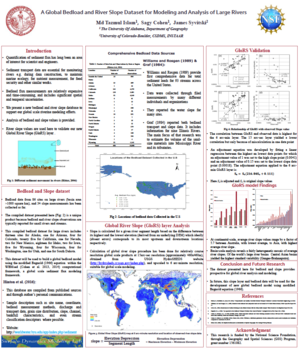Annualmeeting:2017 CSDMS meeting-089
Browse abstracts
Testing a New Global Bedload Flux Model

Proper quantification of sediment flux has always been an area of interest both for scientist and engineers involved in hydraulic engineering and management of rivers, estuaries and coastal waters. In spite of the importance of bedload flux globally, either for monitoring water quality, maintaining coastal and marine ecology or during dam construction or even for food security, bedload data, especially for large rivers, extremely scarce. This is due to the fact that bedload flux measurements are relatively expensive and time consuming and introduce large spatial and temporal uncertainties. Lack of adequate and continuous field observation is a hindrance to developing a globally accepted numerical model. We developed a new global riverine bedload flux model as an extension of the WBMsed framework. Here we present an evaluation of the model predictions using over eighty field observations for large rivers (over 1000 km2), collected from different sources. This model will be used to study various aspects of fluvial geomorphology globally, which is most common interest area for the researcher to see the impacts of different issues at global scale. Also, considering the contribution of bedload as sediment in the global level, it will elucidate the relationship between suspended sediment and bedload. The observational dataset we compiled is in itself a unique product that can be instrumental for future studies.
